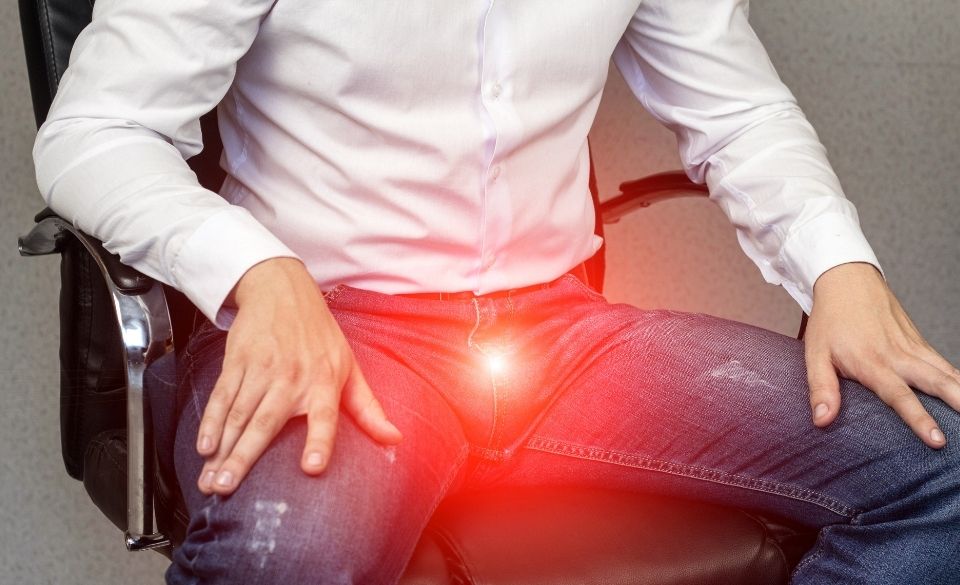
Groin Sore After Running – What Should Runners Know?
Page Contents
Groin pain is a common problem for runners. It can be caused by several things, including overuse, muscle imbalance, and poor form. However, there are some things you can do to help prevent or relieve groin pain.
In this article today we discuss reasons why your groin may be sore after running, how to treat groin pain after running, and how to do a groin strain test.
Groin Sore After Running – What Should Runners Know?
If you’re a runner who experiences groin pain or a sore groin after running, there are several possible causes. Overuse is one of the most common reasons for Groin pain in runners. This is often seen in new runners who have not yet built up their mileage gradually. In addition, Groin pain can also be caused by muscle imbalance or tightness in the muscles around the hip. Poor form when running can also lead to Groin pain.
Some of the common symptoms of groin pain include:
– Pain when running or exercising
– Pain when touching the affected area
– Stiffness or swelling in the groin area
– Difficulty walking or moving the leg
If you experience any of these symptoms, it’s important to see a doctor or physiotherapist to get an accurate diagnosis and treatment plan. If left untreated, a sore groin after running can lead to more serious problems, such as joint damage.
In more severe cases, groin pain can be caused by a condition called pubic overload or osteitis pubis. Excessive shearing forces cause this on the bones, tendons, and joints in the groin area.
Most people who experienced groin pain from running find that it also affects the adductor and/or abdominal muscles. In severe cases, pain may be felt when coughing, which means it can also be mistaken for a hernia.
Osteitis pubis treatment is easily addressed if you are a runner. Rehabilitation includes reducing running volume and intensity and implementing exercises to strengthen the pelvis. It may also include stretching to increase pelvic flexibility. In some severe cases, an osteitis pubis injection may be used in the rehabilitation process.
Other Causes of Groin Pain in Runners
Adductor Tendinopathy
Adductor Tendinopathy is a condition that results when the tendons in the inner thigh become overloaded and inflamed. Adductor Tendinopathy is a common injury in athletes, particularly those who participate in sports that involve running, jumping, and changing direction (such as soccer, football, and basketball). The condition can also occur when the runner has pelvic instability or a sudden increase in mileage or intensity. The pain usually develops when running but can also appear during rest after a workout.
The pain may worsen with activity or be aggravated by stretching or touching the affected area. Adductor Tendinopathy is usually treated with a combination of rest, ice, and physical therapy. In some cases, surgery may be necessary to repair the damaged tendons.
Hip Joint Impingement
Hip Joint Impingement is a condition where the bones in the hip joint rub together abnormally and often get mistaken for a groin injury. This can cause pain and stiffness in the hip joint. Hip Joint Impingement is a common cause of hip pain, especially in young athletes. Treatment for Hip Joint Impingement usually involves physical therapy and exercises to improve the flexibility and strength of the hip joint.
How To Treat Groin Pain After Running
If you’re a runner, you know that groin pain can be a real problem. It’s often caused by overuse and can be quite debilitating. Here are some tips on how to treat groin pain after running:
1. Rest. This is probably the most important thing you can do. Take a few days off from running to allow your body to recover.
2. Ice. Apply ice to the affected area for 20 minutes at a time, several times per day. This will help reduce inflammation and pain.
3. Stretch. Once the pain has subsided, start stretching the muscles in your groin area. This will help prevent future injuries.
4. See a doctor or physiotherapist. If the pain is severe and doesn’t go away after a few days, you should see a doctor or physiotherapist. They can prescribe medication to help relieve the pain and will be able to determine if there’s any other underlying cause for your pain.
Groin Strain Test For Runners
Symptoms of a Groin Strain can vary depending on the severity of the injury. However, common symptoms include pain in the groin area, tenderness, swelling, bruising, and muscle spasms. More severe symptoms may include a popping sensation at the time of injury, difficulty walking, and an inability to put weight on the affected leg. If you experience any of these symptoms, it is important to seek medical attention as soon as possible to avoid further damage
The Groin Strain Test is used to evaluate the severity of a groin strain injury. This test is typically performed by a healthcare provider and may be used in conjunction with other tests, such as an MRI, to diagnose a groin strain.
To perform the Groin Strain Test, the individual will be asked to lie on their back with their legs extended. The healthcare provider will then flex the individual’s hip, bringing their knee up towards their chest. The individual will then be asked to resist this movement by pushing against the healthcare provider’s hand.
The Groin Strain Test is considered positive if there is pain or tenderness in the groin region when the hip is flexed. This indicates that there is likely a strain injury to the muscles or tendons in the groin region.
If you think you may have a groin strain, it is important to see a healthcare provider to get an accurate diagnosis and treatment plan. Groin strains can be painful and debilitating, so it is important to seek medical care if you are experiencing pain in this area.



